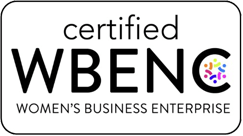As the saying goes, “Content is king,” but producing high-quality content in the life sciences field can be a daunting task. Fortunately, creating content that is both informative and engaging is now easier than ever, especially with the advantages of technology and the rise of AI tools that can assist in the process.
In this article, we’ll provide you with key tips to help you create content that will not only educate your audience but build your brand as well. From repurposing content in innovative ways to using clear and simple language to explain complex topics, we’ll show you how to create information that will leave your audience wanting more.
So, let’s dive in and discover how to craft content that will reign supreme.
1. Put The Audience At The Center Of Planning, Execution And Measurement
Are you tired of feeling like your marketing campaigns are falling flat?
Do you struggle to connect with your target audience and drive meaningful engagement?
Then take the time to truly understand your target customer! From developing detailed personas and journey maps to identifying their most pressing needs and pain points, you can create messaging and value propositions that resonate with them on a deeper level.
With this valuable content creation tip, you can craft an activation plan that drives awareness, sparks interest, and connects with your audience in a meaningful way.
2. Repurpose Content In Innovative Ways
Content repurposing refers to the process of taking existing content and adapting it for use in different formats or mediums. For instance, republishing blog posts as videos, turning a series of tweets into a webinar, or creating a podcast from a whitepaper.
By repurposing content, you can get more and spend less time and money out of existing materials and nurture existing customers or reach new customers.
Additionally there’s less room for error, and it helps keep the brand’s message consistent across different platforms and between content creators. In the life sciences, this is especially important because of the technical and scientific rigor that each published content piece needs to go through.
3. Develop Operationalized Content Standards
Due to an aggressive regulatory environment, it’s essential that content research, development, editing, launch and post-launch review is operationalized enabling less error. It’s imperative to have a cross-functional steering and oversight committee that collaboratively sets standards.
Building a content performance dashboard also helps you build KPIs at program level and campaign level and monitor progress to reaching your goals. These digital operations methods allow you to retarget readers based on behavior/interests. Also remember to use data to back up your claims of what should be repurposed, retargeted or not.
4. Use Clear And Simple Language To Explain Complex Topics
When it comes to the digital content creation process, one important tip is to use clear and simple language to explain complex topics. The process of science is complex but the explanation of how it works should not be complex. Keep the messaging high level and provide helpful links if readers want to learn more. Useful tools such as visuals, videos, images, diagrams are excellent ways to supplement writing and get your point across.

In essence, the key to effective communication lies in striking a balance between semantic richness and simplicity, providing easy-to-digest information while allowing for in-depth exploration if desired.
5. Empower Sales With Actionable Insights
Data-driven strategies have proven to be highly effective in this regard, providing valuable insights into customer behavior and interests. And when it comes to empowering your sales team, there’s no better tool than actionable insights derived from your digital content.
By analyzing the data from your content, you can gain a deep understanding of your audience’s preferences and pain points. With this knowledge at your fingertips, you can provide your sales team with the tools they need to make informed, targeted sales pitches that resonate with your customers. This could spell the difference between closing a deal and losing a potential customer to the competition.
What’s more, with advances in artificial intelligence and machine learning technology, the depth and accuracy of content insights are increasing by the day. This means that you can leverage more detailed and nuanced information about your customers, and stay on top of emerging trends and preferences in real-time.
6. Use Artificial Intelligence Content Generation Tools
Artificial Intelligence (AI) content generation tools have the potential to create high-quality summaries of technical information and can be a great way to save time and increase productivity, freeing up more time for strategic thinking. Additionally, their user experience is often smooth and intuitive, with options for customizing the tone of the writing to fit your brand.
However, marketers must also be cautious when using them. While they can repurpose existing content ideas and generate title suggestions and stock images for social media posts, they may struggle with more complex writing tasks, such as developing nuanced arguments or creating unique, original content. Moreover, the majority of them are not great at capturing the marketing tone and voice of a brand or effectively connecting the dots between different pieces of content to tell a cohesive story.
With content generating tools, finding opportunities in the misinformation and bias that large language models often produce can help kick off productive discussions. The fact that it’s not perfect is a great time to learn! For example, with ChatGPT, exploring opposing viewpoints can help sharpen your critical thinking skills. When considering any generated output from these language models it’s important to discern between trusted information and misdirection – this is an excellent opportunity for growth as you learn how to develop such distinctions. Leveraging the breadth of perspectives provided by ChatGPT may reveal unexplored aspects within our own ideas, allowing us to identify vulnerable areas in need of further examination or consideration.
Also, when using AI content generation tools, marketers must ensure the messaging is compliant with relevant regulations, and aligned with the brand’s messaging and values.
Ultimately, the key to successful content generation with AI tools is to use them as part of a broader content strategy, complementing human insights and creativity with the efficiency and precision of technology.
Final Thoughts
In conclusion, creating high-performing content in the life sciences field requires a combination of creativity, strategic thinking, and leveraging the advantages of technology. By following the tips discussed in this article brands can create content that resonates with their audience and ultimately drives results.
At Sciencia Consulting, we specialize in helping life sciences brands develop and execute effective digital marketing strategies that drive meaningful results. Our team of experts has a deep understanding of the unique challenges and opportunities facing the life sciences industry, and we use our expertise to help our clients achieve their goals.
From helping you build your brand awareness and customer loyalty with educational life sciences content marketing to providing life science companies with effective data-driven SEO solutions to boost rankings in search engines, we can help your brand stand out in a crowded market. Contact us today to learn more!
You might also enjoy:




